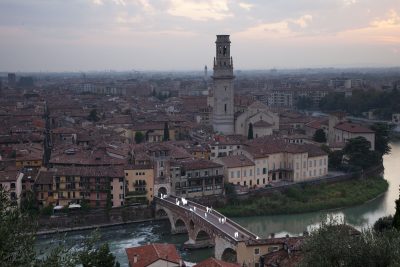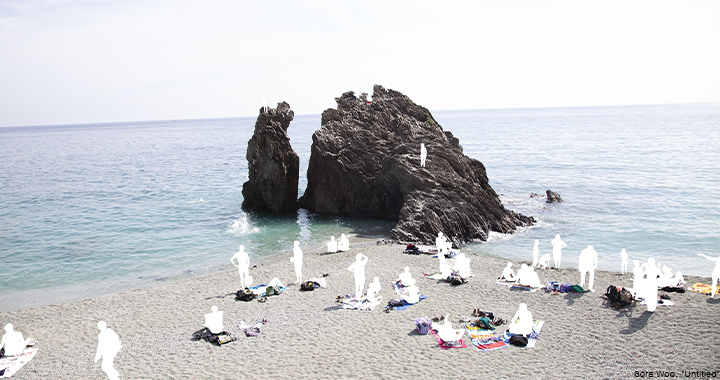June 17 – 21, 2020
2020년 6월 17일 – 21일
M Gallery, CICA Museum
Piled Up Archives
쌓여버린 아카이브
The Fourth of July fireworks are stunning enough to catch everyone’s attention,including mine. As soon as they start, I take out my cell phone and begin taking pictures. When my eyes grow tired from staring at the phone screen, I take a break and look up into the crowd. Everyone is watching the big, colorful display in the sky through their phones. It is extremely rare to actually find anyone who is watching the spectacular fireworks with their own eyes.
This phenomenon permeates contemporary culture. Everywhere we visit, no matter what we see, we try to prove that we saw something by taking pictures, often before we even experience it ourselves. I call this a “proof shot”. Although it will likely become one of the forgotten photos that accumulate in our piled-up archive, we still take several shots of the scene in landscape mode, portrait mode, various angles, zoomed in, zoomed out, and so on, in a futile attempt to capture the scene in some picture-perfect memory. Among tons of saved photos, the selected moment will be edited by adding rightness, cropping, or even using specialized apps. Then finally this perfect memory photo is shared publicly.
This collection of work is my take on a “proof shot.” Within photos taken from traveling to different cities, I’ve removed the people, only leaving their silhouette. Only the trace of people and their movement exists in the image pointing to how photo-making today has lost its humanity. Compared to the past that required significant time and effort to produce a picture in your hands, current photography only necessitates a single finger. We can easily take, delete, and share hundreds of pictures in seconds. Because photo-making now takes such little work, and there is no need to be judicious, I question what a picture means. People are so focused on proving to other people online that they are having experiences, that they are not actually present in their own lives.
흔히 사용되던 과거의 필름 카메라와 달리, 오늘날 우리는 스마트폰을 통해 몇 번의 터치만으로 손쉽게 사진을 찍고, 나아가 수정부터 공유까지 가능하다. 한 장의 사진을 얻기 위해 거쳐야 했던 필름 현상 과정이 이제는 ‘One Click Gesture’로 대체되었고, 개인의 경험을 인증하고 공유하는 데에는 손가락 터치 외 별다른 도구가 필요하지 않게 되었다.
사람들은 가로, 세로, 줌인, 줌 아웃 등 다양한 구도로 최적의 사진이 나올 때까지 끊임없이 찍는다. ‘찍다 보면 한 장쯤은 건지겠지’하는 마음으로, 완벽한 한 장면이 탄생하기까지 찍은 수많은 영혼 없는 사진들은 어느새 쌓이고 쌓여 앨범 용량을 초과하기 일쑤다.
각자의 경험을 이미지화하여 인증하고 공유하는 것은 오늘날의 주요 소통 방법으로 자리 잡았다. 하지만 이러한 모습은 경험 그 자체보다는 그저 “기록을 남기는 것”에 매달리는 우리의 모습을 적나라하게 보여주기도 한다.
“쌓여버린 아카이브의 작업”을 통해 나는 여행지에서 촬영한 이미지들에 찍힌 사람들의 모습을 지우고 그들의 실루엣만 남겨놓았다. 작품 속에서 사라진 개개인의 모습을 통해, 오늘날 사진이 만들어지고 소비되는 과정에서 사라지는 인간성을 보여주고자 한다.
사람들이 사진을 찍고 기록하는 것은 무엇을 위함일까. 영혼 없이 촬영되는 사진 속에서 지워진 사람들의 모습은 어쩌면 그 어느 누구의 인증샷도 아닌 이미지 그 자체로 전락되고 있는 것은 아닐까.
Sora Woo is a visual artist and photographer based in Brooklyn, New York. Woo’s photographs concentrate on the spatial relationship between human and place. Her works document the residue of humanity, the physical consequences of human interaction. Woo received her MFA from Pratt Institute, New York and BFA from the School of Visual Arts, New York. Woo’s works have been presented in New York, Massachusetts, Paris, and Korea.
 Sora Woo,”Untitled” (-)
Sora Woo,”Untitled” (-)
